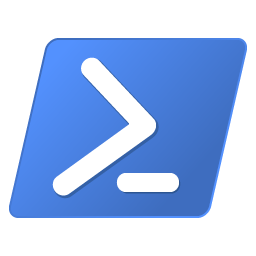
PowerShell Debug Tools for Ops
Client TCP
$TCP_HOST="myhostname.domain.com" # or : "localhost", or ip like 192.168.0.10.
$TCP_PORT=443
Test-NetConnection -ComputerName $TCP_HOST -Port $TCP_PORT -InformationLevel "Detailed"
FTP and SFTP Client
$FTP_USER=remote_username
$FTP_HOST=hostname
Install-Module -Name Posh-SSH
$SFTPSession = New-SFTPSession -ComputerName $FTP_HOST -Credential (Get-Credential)
Get-SFTPItem -SessionId $SFTPSession.SessionId -Path /home/myuser/myfile.txt -Destination c:\myfolder
See also WinSCP Module.
HTTP & HTTPS Client
$HTTP_PROTOCOL="https" # default http; https if secured.
$HTTP_HOST="www.mydomain.com" # ex: www.domain.tld
$HTTP_PORT="443" # default 80 not secure; 443
$HTTP_PATH="/" # / or path/to/ressource
$HTTP_URI=${HTTP_PROTOCOL}://${HTTP_HOST}:${HTTP_PORT}${HTTP_PATH}
[Net.ServicePointManager]::SecurityProtocol = [Net.SecurityProtocolType]::Tls12
$webcall = Invoke-WebRequest -Uri $HTTP_URI -UseBasicParsing
Write-Host ($webcall | Format-Table | Out-String)
LDAP & LDAPS Client
If you want a GUI LDAP client, get the free LDAP Browser 4.5 (not the paid administrator version).
$LDAP_PROTOCOL="ldap" # or ldaps
$LDAP_HOST= # ex: ldap.domain.tld
$LDAP_PORT="389" # default : 389 (LDAP), 636 (LDAPS)
$LDAP_URL=$LDAP_PROTOCOL://$LDAP_HOST:$LDAP_PORT
$LDAP_USERS_BASE=
$LDAP_BIND_FORMAT=
$LDAP_GROUPE_ATTRIBUT=
$LDAP_USERS_CONNECTION_STRING=
$LDAP_USER_CONNECTION_STRING=
$LDAP_BIND_READONLY_USER_DN=
$LDAP_USER_DN=
$LDAP_FILTER=
$LDAP_ATTR="*" # * for "For all attributs", ex: givenName, sn, mail, uid
Check user exist :
[adsi]"$LDAP_USER_CONNECTION_STRING"
Check AD auth :
Function Test-ADUserAuthentication {
param(
[parameter(Mandatory=$true)]
[string]$ADUserLogin,
[parameter(Mandatory=$true)]
[string]$ADUserPassword)
((New-Object DirectoryServices.DirectoryEntry -ArgumentList "",$ADUserLogin,$ADUserPassword).psbase.name) -ne $null
}
$ADUserLogin = "account"
$ADUserPassword = "pass"
Test-ADUserAuthentication -ADUserLogin $ADUserLogin -ADUserPassword $ADUserPassword
Check Member of a group :
Import-Module ActiveDirectory
Get-ADGroupMember $GROUP_NAME | select name,distinguishedname
SMTP Client
$SMTP_HOST="smtp.domain.com" # default
$SMTP_PORT="25" # default port 25 not secure, and 587 for encrypted (secure)serveur
# $SMTP_USERNAME= # optional
# $SMTP_PASSWORD= # optional
$SMTP_SUBJECT="Test Subject"
$SMTP_BODY="Test Body"
$SMTP_RECIPIENT="recipient@domain.com" # Example
# $SMTP_FROM="sender@domain.com" # Optional, don't add this if your server are not trusted by the recipient smtp server.
Send-MailMessage -SmtpServer $SMTP_HOST -Port $SMTP_PORT -To $SMTP_RECIPIENT -Subject $SMTP_SUBJECT -Body $SMTP_BODY
Show Listened ports
Get-NetTCPConnection -State Listen,Established